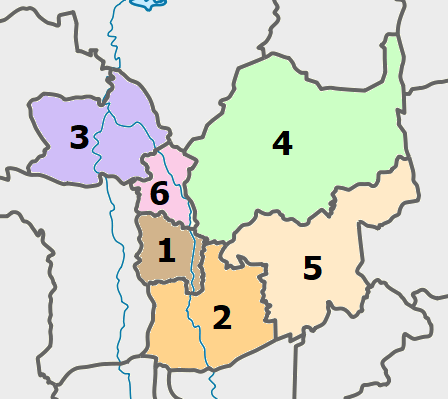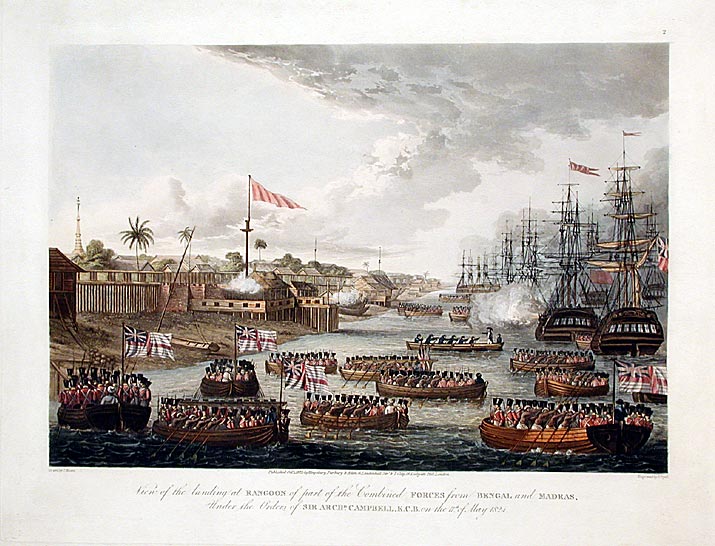|
Wat Bophit Phimuk
Wat Bophit Phimuk Worawihan ( th, วัดบพิตรพิมุขวรวิหาร), or simple known as Wat Bophit Phimuk (or written as Wat Bopitpimukh) is a second grade royal temple in Bangkok, located on Chakkrawat Road, Chakkrawat Sub-district, Samphanthawong District near the foot of Phra Pok Klao Bridge on periphery of Chakkrawat Sub-district, Samphanthawong District and Wang Burapha Phirom Sub-district, Phra Nakhon District. Regarded as another Thai temple located in the area known as Chinatown, in addition to the Wat Traimit or the Wat Chakkrawat. It is an ancient civil temple that has existed since the Ayutthaya period and named ''"Wat Teen Lane"'' (วัดตีนเลน) or ''"Wat Choeng Lane"'' (วัดเชิงเลน), due to the temple's location near the east bank of the Chao Phraya River where the area had an abundance of mud (lane in Thai means mud). This temple does not know who created it. Assumed that it would be built after the Ki ... [...More Info...] [...Related Items...] OR: [Wikipedia] [Google] [Baidu] |
Central Thailand
Central Thailand (Central plain) or more specifically Siam (also known as Suvarnabhumi and Dvaravati) is one of the regions of Thailand, covering the broad alluvial plain of the Chao Phraya River. It is separated from northeast Thailand (Isan) by the Phetchabun mountain range. The Tenasserim Hills separate it from Myanmar to the west. In the north it is bounded by the Phi Pan Nam Range, one of the hilly systems of northern Thailand. The area was the heartland of the Ayutthaya Kingdom (at times referred to as Siam), and is still the dominant area of Thailand, containing as it does, the world's most primate city, Bangkok. Definition The grouping of Thai provinces into regions follow two major systems, in which Thailand is divided into either four or six regions. In the six-region system, commonly used in geographical studies, central Thailand extends from Sukhothai and Phitsanulok Provinces in the north to the provinces bordering the Gulf of Thailand in the south, excluding the m ... [...More Info...] [...Related Items...] OR: [Wikipedia] [Google] [Baidu] |
17th-century Buddhist Temples
The 17th century lasted from January 1, 1601 ( MDCI), to December 31, 1700 ( MDCC). It falls into the early modern period of Europe and in that continent (whose impact on the world was increasing) was characterized by the Baroque cultural movement, the latter part of the Spanish Golden Age, the Dutch Golden Age, the French ''Grand Siècle'' dominated by Louis XIV, the Scientific Revolution, the world's first public company and megacorporation known as the Dutch East India Company, and according to some historians, the General Crisis. From the mid-17th century, European politics were increasingly dominated by the Kingdom of France of Louis XIV, where royal power was solidified domestically in the civil war of the Fronde. The semi-feudal territorial French nobility was weakened and subjugated to the power of an absolute monarchy through the reinvention of the Palace of Versailles from a hunting lodge to a gilded prison, in which a greatly expanded royal court could be more easily k ... [...More Info...] [...Related Items...] OR: [Wikipedia] [Google] [Baidu] |
Buddhist Temples In Bangkok
Buddhism ( , ), also known as Buddha Dharma and Dharmavinaya (), is an Indian religion or philosophical tradition based on teachings attributed to the Buddha. It originated in northern India North India is a loosely defined region consisting of the northern part of India. The dominant geographical features of North India are the Indo-Gangetic Plain and the Himalayas, which demarcate the region from the Tibetan Plateau and Central ... as a -movement in the 5th century BCE, and Silk Road transmission of Buddhism, gradually spread throughout much of Asia via the Silk Road. It is the Major religious groups, world's fourth-largest religion, with over 520 million followers (Buddhists) who comprise seven percent of the global population. The Buddha taught the Middle Way, a path of spiritual development that avoids both extreme asceticism and hedonism. It aims at liberation from clinging and craving to things which are impermanent (), incapable of satisfying ('), and witho ... [...More Info...] [...Related Items...] OR: [Wikipedia] [Google] [Baidu] |
Samphanthawong District
Samphanthawong ( th, สัมพันธวงศ์, ) is one of the 50 districts (khet) of Bangkok, Thailand. Regarded as Bangkok's Chinatown, it is the smallest district in area but has the highest population density of Bangkok's districts. Neighboring districts are (from north clockwise) Pom Prap Sattru Phai, Bang Rak, Khlong San (across Chao Phraya River), and Phra Nakhon. History The area has been a Chinese community since the early days of Bangkok. Originally living in what is now the Phra Nakhon district, they were relocated here when the capital was set up. The narrow Sampheng Lane (สำเพ็ง, now called Wanit I Road, วานิช 1) was the district's main street until Yaowarat Road was constructed in 1892 during the reign of King Chulalongkorn. Sampheng Lane is depicted on the back of series 15 20 baht banknotes, to commemorate an important post-World War II visit by young king Rama VIII (accompanied by HM's brother, Prince Bhumibol, with his ever-p ... [...More Info...] [...Related Items...] OR: [Wikipedia] [Google] [Baidu] |
Ubosot
The ordination hall is a Buddhist building specifically consecrated and designated for the performance of the Buddhist ordination ritual ('' upasampada'') and other ritual ceremonies, such as the recitation of the Patimokkha. The ordination hall is located within a boundary () that defines "the space within which all members of a single local community have to assemble as a complete Sangha () at a place appointed for ecclesiastical acts ()." The constitution of the ''sīmā'' is regulated and defined by the Vinaya and its commentaries and sub-commentaries. Burmese ordination halls In Burmese, ordination halls are called ''thein'' (), derived from the Pali term , which means "boundary." The ''thein'' is a common feature of Burmese monasteries (''kyaung''), although the ''thein '' may be not necessarily be located on the monastery compound itself. Shan ordination halls, called ''sim'' (သိမ်ႇ)'','' are exclusively used for events limited to the monkhood. The central imp ... [...More Info...] [...Related Items...] OR: [Wikipedia] [Google] [Baidu] |
Maravijaya
Māravijaya attitude or ''mara vichai'' ( th, ปางมารวิชัย, ; Khmer language, Khmer: ព្រះពុទ្ធផ្ចាញ់មារ, ''preah pud (buddha) p'chanh mea'') is an Iconography of Gautama Buddha in Laos and Thailand, attitude of Buddha in Thai art of which the seated Buddha is putting his hand in the relax posture towards to the ground, loosely holding his knee. The other hand is on his lap. His eyes, sometimes closed, look down to the ground. The gesture of the hand reaching the ground is called ''Mudra#Bhūmisparśa Mudrā, bhumisparshamudra'', which also refers to the attitude as well. The gesture refers to the episode which the Buddha calling the Phra Mae Thorani, earth to witness. In Cambodian art, Khmer art, this attitude of Buddha is called ''preah pud (buddha) p'chanh mea'' which means the sacred buddha defeating the enemy (māra). The attitude refers to the episode that he was reaching the Enlightenment in Buddhism, enlightenment an ... [...More Info...] [...Related Items...] OR: [Wikipedia] [Google] [Baidu] |
Mythical Creature
A legendary creature (also mythical or mythological creature) is a type of fictional entity, typically a hybrid, that has not been proven and that is described in folklore (including myths and legends), but may be featured in historical accounts before modernity. In the classical era, monstrous creatures such as the Cyclops and the Minotaur appear in heroic tales for the protagonist to destroy. Other creatures, such as the unicorn, were claimed in accounts of natural history by various scholars of antiquity. Some legendary creatures have their origin in traditional mythology and were believed to be real creatures, for example dragons, griffins, and unicorns. Others were based on real encounters, originating in garbled accounts of travellers' tales, such as the Vegetable Lamb of Tartary, which supposedly grew tethered to the earth. Creatures A variety of mythical animals appear in the art and stories of the classical era. For example, in the ''Odyssey'', monstrous creatures in ... [...More Info...] [...Related Items...] OR: [Wikipedia] [Google] [Baidu] |
Mongkut
Mongkut ( th, มงกุฏ; 18 October 18041 October 1868) was the fourth monarch of Siam (Thailand) under the House of Chakri, titled Rama IV. He ruled from 1851 to 1868. His full title in Thai was ''Phra Bat Somdet Phra Menthora Ramathibodi Sri Sinthara Mahamakut Phra Mongkut Phra Siam Deva Mahamakut Wittaya Maharaj'' (พระบาทสมเด็จพระปรเมนทรรามาธิบดีศรีสินทรมหามงกุฎ พระจอมเกล้าเจ้าอยู่หัว พระสยามเทวมหามกุฏวิทยมหาราช). Outside Thailand, Mongkut is best known as the king in the 1951 musical and 1956 film ''The King and I'', based on the 1946 film '' Anna and the King of Siam''in turn based on a 1944 novel by an American author about Anna Leonowens' years at his court, from 1862 to 1867, drawn from Leonowens’ memoir. Siam first felt the pressure of Western expansionism during Mongku ... [...More Info...] [...Related Items...] OR: [Wikipedia] [Google] [Baidu] |
Nangklao
Nangklao ( th, พระบาทสมเด็จพระนั่งเกล้าเจ้าอยู่หัว, ; 31 March 1788 – 2 April 1851), birth name Thap ( th, ทับ), also styled Rama III, was the third king of Siam under the House of Chakri, ruling from 21 July 1824 to 2 April 1851. Nangklao was the eldest surviving son of his predecessor, king Rama II. His mother Sri Sulalai was one of the king's secondary wives. Nangklao was likely designated as heir by his father, his accession was uncontested and smoothly confirmed by the grand council. Foreign observers, however, falsely perceived him as having usurped the prior claim of his half-brother Prince Mongkut, who was younger, but born to queen Sri Suriyendra and thus " legitimate" according to Western customs. Under the old concept of Thai monarchy, however, a proper king must emulate Maha Sammata in that he must be "elected by the people." Ironically, Prince Mongkut may have later contributed to this ... [...More Info...] [...Related Items...] OR: [Wikipedia] [Google] [Baidu] |
Channel 3 (Thailand)
Channel 3 or Channel 3 HD ( th, สถานีโทรทัศน์ไทยทีวีสีช่อง 3 (ช่อง 3 เอชดี ช่อง 33)) is a Thai free-to-air television network that was launched on 26 March 1970 as Thailand's first commercial television station. Channel 3 is operated by BEC Multimedia Company Limited (“BECM”), a subsidiary of publicly traded company BEC World Public Company Limited. The network is headquartered in the Maleenont Towers of Bangkok. History Channel 3 was launched on 26 March 1970 at 10:00 Bangkok Time by Prime Minister Field Marshal Thanom Kittikachorn. This broadcast area was only limited to the Bangkok Metropolitan Area during its early years. On 1 January 1985, it launched its first teletext service known as Infonet. On 1 January 1987, started to air in stereo and, during the 1990s, its stereo broadcast was introduced into its VHF free-to-air station nationwide. TV3 was also experimenting with bilingual transmiss ... [...More Info...] [...Related Items...] OR: [Wikipedia] [Google] [Baidu] |
Wat Saket
Wat Saket Ratcha Wora Maha Wihan ( th, วัดสระเกศราชวรมหาวิหาร, usually shortened to Wat Saket is a Buddhist temple (''wat'') in Pom Prap Sattru Phai district, Bangkok, Thailand. The temple dates back to the Ayutthaya era, when it was known as Wat Sakae (วัดสะแก). When Bangkok became the capital, King Rama I (1737–1809) renovated the temple and gave it its present name (which roughly translates as "wash hair"): it was believed that on his return from the war, the king stopped to take a bath and wash his hair here, before entering the inner city. Phu Khao Thong ''Phu Khao Thong'' (“Golden Mountain”, ) is a steep artificial hill inside the Wat Saket compound. Rama I's grandson, King Rama III (1788–1851), decided to build a chedi of huge dimensions inside Wat Saket, but the chedi collapsed during construction because the soft soil of Bangkok could not support the weight. Over the next few decades, the abandoned m ... [...More Info...] [...Related Items...] OR: [Wikipedia] [Google] [Baidu] |






